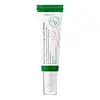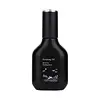What's inside
What's inside
 Key Ingredients
Key Ingredients

 Benefits
Benefits

 Concerns
Concerns

No concerns
 Ingredients Side-by-side
Ingredients Side-by-side

Water
Skin ConditioningGlycerin
HumectantNiacinamide
SmoothingSodium Hyaluronate
HumectantPropanediol
SolventErythritol
HumectantButylene Glycol
HumectantSqualane
EmollientOryza Sativa Bran Extract
Skin ConditioningCalendula Officinalis Flower Extract
MaskingCarica Papaya Fruit Extract
Skin ConditioningHippophae Rhamnoides Fruit Extract
Skin ConditioningMalpighia Glabra Fruit Extract
Skin ConditioningPolyglyceryl-10 Laurate
Skin ConditioningChlorphenesin
AntimicrobialArginine
MaskingEthylhexylglycerin
Skin ConditioningCarbomer
Emulsion StabilisingGlutathione
1,2-Hexanediol
Skin ConditioningHydroxypropyl Cyclodextrin
MaskingDisodium EDTA
Hydroxyethylcellulose
Emulsion StabilisingAllantoin
Skin ConditioningRosmarinus Officinalis Leaf Oil
MaskingWater, Glycerin, Niacinamide, Sodium Hyaluronate, Propanediol, Erythritol, Butylene Glycol, Squalane, Oryza Sativa Bran Extract, Calendula Officinalis Flower Extract, Carica Papaya Fruit Extract, Hippophae Rhamnoides Fruit Extract, Malpighia Glabra Fruit Extract, Polyglyceryl-10 Laurate, Chlorphenesin, Arginine, Ethylhexylglycerin, Carbomer, Glutathione, 1,2-Hexanediol, Hydroxypropyl Cyclodextrin, Disodium EDTA, Hydroxyethylcellulose, Allantoin, Rosmarinus Officinalis Leaf Oil
Water
Skin ConditioningGlycerin
HumectantButylene Glycol
HumectantGlycereth-26
HumectantNiacinamide
SmoothingSodium Polyacryloyldimethyl Taurate
Emulsion StabilisingCaprylyl Glycol
EmollientDicaprylyl Ether
EmollientAcrylates/C10-30 Alkyl Acrylate Crosspolymer
Emulsion StabilisingDimethicone/Vinyl Dimethicone Crosspolymer
Skin ConditioningHydroxyacetophenone
AntioxidantPentylene Glycol
Skin ConditioningTromethamine
BufferingCamellia Sinensis Leaf Extract
AntimicrobialDipropylene Glycol
HumectantMaltodextrin
AbsorbentEthylhexylglycerin
Skin ConditioningPolysilicone-15
UV FilterCaramel
Cosmetic ColorantAdenosine
Skin ConditioningPolyglyceryl-10 Dilaurate
Xanthan Gum
EmulsifyingEclipta Prostrata Extract
Skin ConditioningCoccinia Indica Fruit Extract
Skin ConditioningDisodium EDTA
Silica
AbrasiveMethylpropanediol
SolventPanthenol
Skin ConditioningHippophae Rhamnoides Fruit Extract
Skin ConditioningButyrospermum Parkii Butter Extract
Skin ConditioningPolyglyceryl-10 Myristate
Skin Conditioning1,2-Hexanediol
Skin ConditioningCaprylic/Capric Triglyceride
MaskingMacadamia Ternifolia Seed Oil
EmollientPanax Ginseng Berry Extract
Skin ConditioningEthylhexyl Palmitate
EmollientCetyl Ethylhexanoate
EmollientPhellodendron Amurense Bark Extract
Skin ConditioningCoptis Japonica Extract
AntimicrobialScutellaria Baicalensis Root Extract
AstringentScrophularia Buergeriana Extract
Skin ConditioningPhytosteryl/Behenyl/Octyldodecyl Lauroyl Glutamate
Skin ConditioningCholesterol
EmollientPiper Methysticum Root Extract
Skin ConditioningGardenia Florida Fruit Extract
Skin ConditioningBrassica Campestris Sterols
EmollientHydrogenated Lecithin
EmulsifyingAcetyl Hexapeptide-8
HumectantFructose
HumectantSaccharomyces Ferment Filtrate
HumectantPolyglyceryl-10 Oleate
Skin ConditioningSodium Hyaluronate
HumectantCentella Asiatica Extract
CleansingGlucose
HumectantPotassium Cetyl Phosphate
EmulsifyingCeramide NP
Skin ConditioningBeta-Glucan
Skin ConditioningHydrolyzed Hyaluronic Acid
HumectantHydroxypropyltrimonium Hyaluronate
Sodium Hyaluronate Crosspolymer
HumectantAsiatic Acid
Skin ConditioningAsiaticoside
AntioxidantSodium Acetylated Hyaluronate
HumectantCeramide Ns
Skin ConditioningMadecassic Acid
Skin ConditioningMadecassoside
AntioxidantCeramide EOP
Skin ConditioningWater, Glycerin, Butylene Glycol, Glycereth-26, Niacinamide, Sodium Polyacryloyldimethyl Taurate, Caprylyl Glycol, Dicaprylyl Ether, Acrylates/C10-30 Alkyl Acrylate Crosspolymer, Dimethicone/Vinyl Dimethicone Crosspolymer, Hydroxyacetophenone, Pentylene Glycol, Tromethamine, Camellia Sinensis Leaf Extract, Dipropylene Glycol, Maltodextrin, Ethylhexylglycerin, Polysilicone-15, Caramel, Adenosine, Polyglyceryl-10 Dilaurate, Xanthan Gum, Eclipta Prostrata Extract, Coccinia Indica Fruit Extract, Disodium EDTA, Silica, Methylpropanediol, Panthenol, Hippophae Rhamnoides Fruit Extract, Butyrospermum Parkii Butter Extract, Polyglyceryl-10 Myristate, 1,2-Hexanediol, Caprylic/Capric Triglyceride, Macadamia Ternifolia Seed Oil, Panax Ginseng Berry Extract, Ethylhexyl Palmitate, Cetyl Ethylhexanoate, Phellodendron Amurense Bark Extract, Coptis Japonica Extract, Scutellaria Baicalensis Root Extract, Scrophularia Buergeriana Extract, Phytosteryl/Behenyl/Octyldodecyl Lauroyl Glutamate, Cholesterol, Piper Methysticum Root Extract, Gardenia Florida Fruit Extract, Brassica Campestris Sterols, Hydrogenated Lecithin, Acetyl Hexapeptide-8, Fructose, Saccharomyces Ferment Filtrate, Polyglyceryl-10 Oleate, Sodium Hyaluronate, Centella Asiatica Extract, Glucose, Potassium Cetyl Phosphate, Ceramide NP, Beta-Glucan, Hydrolyzed Hyaluronic Acid, Hydroxypropyltrimonium Hyaluronate, Sodium Hyaluronate Crosspolymer, Asiatic Acid, Asiaticoside, Sodium Acetylated Hyaluronate, Ceramide Ns, Madecassic Acid, Madecassoside, Ceramide EOP
 Reviews
Reviews

Ingredients Explained
These ingredients are found in both products.
Ingredients higher up in an ingredient list are typically present in a larger amount.
1,2-Hexanediol is a synthetic liquid and another multi-functional powerhouse.
It is a:
- Humectant, drawing moisture into the skin
- Emollient, helping to soften skin
- Solvent, dispersing and stabilizing formulas
- Preservative booster, enhancing the antimicrobial activity of other preservatives
Butylene Glycol (or BG) is used within cosmetic products for a few different reasons:
Overall, Butylene Glycol is a safe and well-rounded ingredient that works well with other ingredients.
Though this ingredient works well with most skin types, some people with sensitive skin may experience a reaction such as allergic rashes, closed comedones, or itchiness.
Learn more about Butylene GlycolDisodium EDTA plays a role in making products more stable by aiding other preservatives.
It is a chelating agent, meaning it neutralizes metal ions that may be found in a product.
Disodium EDTA is a salt of edetic acid and is found to be safe in cosmetic ingredients.
Learn more about Disodium EDTAEthylhexylglycerin (we can't pronounce this either) is commonly used as a preservative and skin softener. It is derived from glyceryl.
You might see Ethylhexylglycerin often paired with other preservatives such as phenoxyethanol. Ethylhexylglycerin has been found to increase the effectiveness of these other preservatives.
Glycerin is already naturally found in your skin. It helps moisturize and protect your skin.
A study from 2016 found glycerin to be more effective as a humectant than AHAs and hyaluronic acid.
As a humectant, it helps the skin stay hydrated by pulling moisture to your skin. The low molecular weight of glycerin allows it to pull moisture into the deeper layers of your skin.
Hydrated skin improves your skin barrier; Your skin barrier helps protect against irritants and bacteria.
Glycerin has also been found to have antimicrobial and antiviral properties. Due to these properties, glycerin is often used in wound and burn treatments.
In cosmetics, glycerin is usually derived from plants such as soybean or palm. However, it can also be sourced from animals, such as tallow or animal fat.
This ingredient is organic, colorless, odorless, and non-toxic.
Glycerin is the name for this ingredient in American English. British English uses Glycerol/Glycerine.
Learn more about GlycerinHippophae Rhamnoides Fruit Extract comes from the seabuckthorn berry. This berry is native to Asia and has been used in traditional medicine for centuries.
The seabuckthorn fruit contains carotenoids, palmitic acid, palmitoleic acid, Vitamin C, linoleic acid, and vitamin E.
The nutritious content of seabuckthorn fruit helps hydrate and nourish the skin. A study from 2018 found seabuckthorn may help with alleviating UV damage due to its anti-inflammatory property. However, it should not replace your sunscreen.
Due to its antioxidant properties, seabuckthorn fruit may help reduce the signs of aging. Antioxidants help fight unstable free-radical molecules, or molecules that may damage your skin cells.
Learn more about Hippophae Rhamnoides Fruit ExtractNiacinamide is a multitasking form of vitamin B3 that strengthens the skin barrier, reduces pores and dark spots, regulates oil, and improves signs of aging.
And the best part? It's gentle and well-tolerated by most skin types, including sensitive and reactive skin.
You might have heard of "niacin flush", or the reddening of skin that causes itchiness. Niacinamide has not been found to cause this.
In very rare cases, some individuals may not be able to tolerate niacinamide at all or experience an allergic reaction to it.
If you are experiencing flaking, irritation, and dryness with this ingredient, be sure to double check all your products as this ingredient can be found in all categories of skincare.
When incorporating niacinamide into your routine, look out for concentration amounts. Typically, 5% niacinamide provides benefits such as fading dark spots. However, if you have sensitive skin, it is better to begin with a smaller concentration.
When you apply niacinamide to your skin, your body converts it into nicotinamide adenine dinucleotide (NAD). NAD is an essential coenzyme that is already found in your cells as "fuel" and powers countless biological processes.
In your skin, NAD helps repair cell damage, produce new healthy cells, support collagen production, strengthen the skin barrier, and fight environmental stressors (like UV and pollution).
Our natural NAD levels start to decline with age, leading to slower skin repair, visible aging, and a weaker skin barrier. By providing your skin niacinamide, you're recharging your skin's NAD levels. This leads to stronger, healthier, and younger looking skin.
Another name for vitamin B3 is nicotinamide. This vitamin is water-soluble and our bodies don't store it. We obtain Vitamin B3 from either food or skincare. Meat, fish, wheat, yeast, and leafy greens contain vitamin B3.
The type of niacinamide used in skincare is synthetically created.
Learn more about NiacinamideSodium Hyaluronate is hyaluronic acid's salt form. It is commonly derived from the sodium salt of hyaluronic acid.
Like hyaluronic acid, it is great at holding water and acts as a humectant. This makes it a great skin hydrating ingredient.
Sodium Hyaluronate is naturally occurring in our bodies and is mostly found in eye fluid and joints.
These are some other common types of Hyaluronic Acid:
Learn more about Sodium HyaluronateWater. It's the most common cosmetic ingredient of all. You'll usually see it at the top of ingredient lists, meaning that it makes up the largest part of the product.
So why is it so popular? Water most often acts as a solvent - this means that it helps dissolve other ingredients into the formulation.
You'll also recognize water as that liquid we all need to stay alive. If you see this, drink a glass of water. Stay hydrated!
Learn more about Water